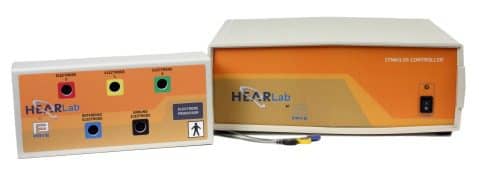The FDA has approved HEARLab Cortical Auditory Evoked Potential Analyzer, manufactured by Frye Electrionics, Tigard, Ore, for the United States market.
Similar to existing ABR technology, the HEARLab Cortical Auditory Evoked Potential Analyzer measures the auditory evoked response of a patient. However, HEARLab tests a later “potential” than ABR, measuring 100-300 ms after the signal instead of 1-3 ms. This feature allows it to be used with signals that are more speech like than the very short pips used in ABR measurements, and also allows it to be used on patients wearing hearing aids.

A transducer, such as an insert earphone, bone vibrator, or sound field speaker, is used to deliver the test signal to the patient who is passively alert. Electrodes placed on the patient’s head measure the cortical response. A statistical analysis of each response (a “p-value”) is automatically calculated to determine the probability that a CAEP signal was present. The clinician can verify this analysis with a visual examination of the measured cortical response.
HEARLab is now available for sale in the United States, Canada, Australia, the European Union, and other countries, and is available through Frye Electronics.
SOURCE: Frye Electronics Inc





